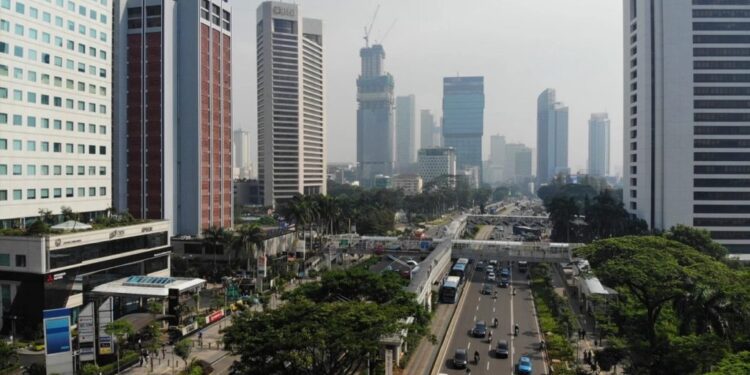Indonesia is contemplating a revision of regulations governing foreign investments in its residential real estate sector, aiming to invigorate the construction industry and position the country as a lucrative global property market for investors.
This Southeast Asian nation is on track to surpass economic powerhouses like Germany and the UK, securing the fourth position globally by mid-century. With a robust annual GDP growth exceeding 5%, well above the global average, Indonesia, a global commodities powerhouse, is experiencing a remarkable economic ascent.
Jakarta, Indonesia – copyright Housearch.com
The driving force behind this upward trajectory is the rapidly growing urban population, fueled by high fertility rates and ongoing urbanization. The World Bank forecasts the formation of an astonishing 780,000 new households annually until 2045, creating a sustained demand for housing.
The surge in demand is attributed to rising incomes, prompting families to upgrade from substandard housing to newly constructed, superior residences. Concurrently, the supply side is nearing its capacity limits, with major developers facing challenges such as overleveraging, impending maturities, and limited avenues for expansion. The overall potential for positive price escalation is highly appealing.
On the surface, Indonesia’s property market appears to be a promising venture for potential investors, as residential prices significantly undercut those in comparable nations. Numbeo reports that the average price per square meter in an Indonesian city center is just above $1,600, considerably lower than neighboring countries.
Despite the promising prospects, property prices remain relatively low for a critical reason. Only one in five Indonesian families can afford a home on the commercial market, leaving approximately 6 million people, or over 2% of the population, effectively without homes.
Traditionally, the Indonesian government has prioritized protecting the market from affluent foreign investors, restricting their property ownership rights to leaseholds of 80-100 years with no access to mortgage finance. Full ‘freehold’ ownership is off-limits for foreigners, and minimum purchase price requirements, according to a leading online property hub Housearch.com, range from $65,000 for a flat in Northern Sumatra to $325,000 for a villa in Jakarta or Bali. While these restrictions have maintained affordability for locals, they have impacted the profitability of the construction sector, prompting a historic shift toward liberalization of foreign ownership.
In 2021, Indonesia initiated the dismantling of barriers, eliminating the long-term residence permit requirement and introducing changes in ownership laws favoring overseas investors. However, progress has been slow, with only approximately 200 foreign owners directly purchasing property in Indonesia without a nominee, and a mere 40 in 2023. Implementation delays, convoluted registration processes, and demands for resident IDs by local authorities have hindered the effectiveness of the reform.
Given that the construction sector contributes about 20% to GDP growth, Indonesia is compelled to further open its housing market to foreign investors, particularly in the premium segment. Speculation suggests that the government may eventually enable full freehold ownership for foreigners in limited, free-zone-style territories, streamlining the registration process.
To attract more affluent migrants, the government has introduced various visa schemes. Notably, the ‘second home’ visa permits a stay of up to 10 years for individuals with a stable income and savings exceeding $130,000. Additionally, a ‘golden visa’ tailored for millionaires has been introduced, and deliberations are underway for a ‘digital nomad’ visa targeting young professionals engaged in remote work.
Despite existing limitations on leasehold ownership, the appeal remains strong. Housearch.com reports impressive average rental yields, reaching as high as 15% in select ‘hot’ areas like Bali or Jakarta, promising a payback period of less than eight years and a tempting double-digit return on investment, even with modest price increases over the lease term.
















